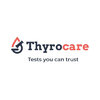
i
Filter interviews by
Apollo Health and Lifestyle Limited Phlebotomist Interview Questions and Answers
Apollo Health and Lifestyle Limited Phlebotomist Interview Experiences
8 interviews found
I applied via Walk-in and was interviewed in Nov 2024. There were 2 interview rounds.
(2 Questions)
- Q1. About skills of my work experience
- Q2. Phlebo related questions
(2 Questions)
- Q1. About my experience of work
- Q2. About my last work salary
Interview Preparation Tips
(2 Questions)
- Q1. About your old job
- Q2. Why you left old job
(2 Questions)
- Q1. What is your expected salary
- Q2. Why you changing the job
(2 Questions)
- Q1. Why you select Apollo
- Q2. In Apollo what would you do
(2 Questions)
- Q1. About your education
- Q2. Which location do you need
(2 Questions)
- Q1. Why u left the old job
- Q2. Why dou refer apollo
Interview Preparation Tips
(1 Question)
- Q1. Why do u prefer apollo
(5 Questions)
- Q1. Telephone round
- Q2. Introduction of skills
- Q3. Skills and talent
- Q4. Family background
- Q5. Future growth of career
Interview Preparation Tips
I applied via Referral and was interviewed before Dec 2023. There was 1 interview round.
(2 Questions)
- Q1. What is the normal range of fbs
- Q2. What tube can be used for hba1c
Interview Preparation Tips
I applied via AmbitionBox and was interviewed before Dec 2023. There were 2 interview rounds.
(5 Questions)
- Q1. Skill related questions
- Q2. How to skills develop
- Q3. Lab skills and talent
- Q4. Education and qualification
- Q5. My previous work experience
Communication skills
Interview Preparation Tips
I applied via Company Website and was interviewed before Sep 2020. There were 3 interview rounds.
Interview Questionnaire
10 Questions
- Q1. Define order of draw
- Q2. How many test in RFT
- Q3. How to draw blood
- Q4. How may you receive a patient
- Q5. What is the normal value of creatinine
- Q6. What is GTT, what is the process of sample collection
- Q7. How you handle when puncture is occurred
- Q8. Normal value of ESR
- Q9. What is theProcess of taking sample of lipid profile
- Q10. What is soft skills
Interview Preparation Tips
Skills evaluated in this interview
Top trending discussions






Interview questions from similar companies

I appeared for an interview before Apr 2024, where I was asked the following questions.
- Q1. What is the procedure for collecting a Fine Needle Aspiration Cytology (FNAC) sample? Please describe it briefly.
- Q2. What is the correct sequence for drawing multiple samples?
- Q3. Are you proficient in rapid testing?
Interview Preparation Tips

I applied via Walk-in and was interviewed in Oct 2022. There were 3 interview rounds.

(2 Questions)
- Q1. What is a phlebotomist
- Q2. A healthcare worker who exclusively takes care of the blood collection process by drawing blood for diagnostic purposes, and assists the medical laboratory technologist, doctors, and nurses are referred to...
(1 Question)
- Q1. What is a blood & order of draw.
- Ans. Your blood is made up of liquid and solids. The liquid part, called plasma, is made of water, salts, and protein. Over half of your blood is plasma. The solid part of your blood contains red blood cells, white blood cells, and platelets. Red blood cells (RBC) deliver oxygen from your lungs to your tissues and organs.
Interview Preparation Tips
I need a job
I lost of money
Apollo Health and Lifestyle Limited Interview FAQs
Tell us how to improve this page.
Apollo Health and Lifestyle Limited Interviews By Designations
- Apollo Health and Lifestyle Limited Staff Nurse Interview Questions
- Apollo Health and Lifestyle Limited Phlebotomist Interview Questions
- Apollo Health and Lifestyle Limited Phlebotomist Technician Interview Questions
- Apollo Health and Lifestyle Limited X RAY Technician Interview Questions
- Apollo Health and Lifestyle Limited Guest Relation Executive Interview Questions
- Apollo Health and Lifestyle Limited Nurse Interview Questions
- Apollo Health and Lifestyle Limited Data Analyst Interview Questions
- Apollo Health and Lifestyle Limited Business Analyst Interview Questions
- Show more
Interview Questions for Popular Designations
Overall Interview Experience Rating
based on 13 interview experiences
Difficulty level
Duration
Interview Questions from Similar Companies
Apollo Health and Lifestyle Limited Phlebotomist Reviews and Ratings
based on 30 reviews
Rating in categories
|
Lab Technician
90
salaries
| ₹1.6 L/yr - ₹4.5 L/yr |
|
Senior Executive
61
salaries
| ₹2.5 L/yr - ₹6 L/yr |
|
Staff Nurse
52
salaries
| ₹2 L/yr - ₹5 L/yr |
|
Assistant Manager
47
salaries
| ₹3.9 L/yr - ₹8.5 L/yr |
|
Medical Laboratory Technician
38
salaries
| ₹1.2 L/yr - ₹3.5 L/yr |

Apollo Hospitals

GeBBS Healthcare Solutions

UnitedHealth

Sahrudaya Healthcare (Medicover Hospitals)
- Home >
- Interviews >
- Apollo Health and Lifestyle Limited Interview Questions












